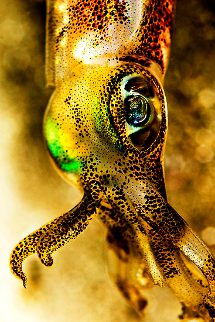Squid's trick pinched for stabler views
 Science has continued its habit of stealing the best bits from nature, this time using a nice bit of squid design for a new way to balance vision and fact.
Science has continued its habit of stealing the best bits from nature, this time using a nice bit of squid design for a new way to balance vision and fact.
Researchers from the University of Queensland have discovered just how a particular species of squid perceives distance. The finding has provided an evolutionary solution to a problem divers regularly encounter in featureless waters.
Epioteuthis lessoniana, commonly known as the bigfin reef squid, uses its own bobbing motion to overcome its blurred vision. The squid’s sight is skewed due to a retinal bump caused by their brains pushing against their eyes.
The squid uses its characteristic bob to balance-out its visual impairment and precisely target prey.
“The tools for distance judgment that animals use on land are of no use at any distance underwater, even in the clearest waters,” UQ PhD student Wen-Sung Chung said.
“This remarkable range-finding mechanism allows for hunting, defence, and object size identification in an environment where depth perception is otherwise very difficult.”
It is difficult to assess the retinal bumps of soft-bodied squid, especially after catching and handling.
To get around this problem, Mr Chung built a device for infra-red retinoscopy, to observe the eye shape of free-swimming squid.
“This discovery is another case of ‘matched filtering’, where animals only need a simple cue to know when and where to strike, without complex neural computation,” Mr Chung said.
More details are available in the full report, accessible here.








 Print
Print